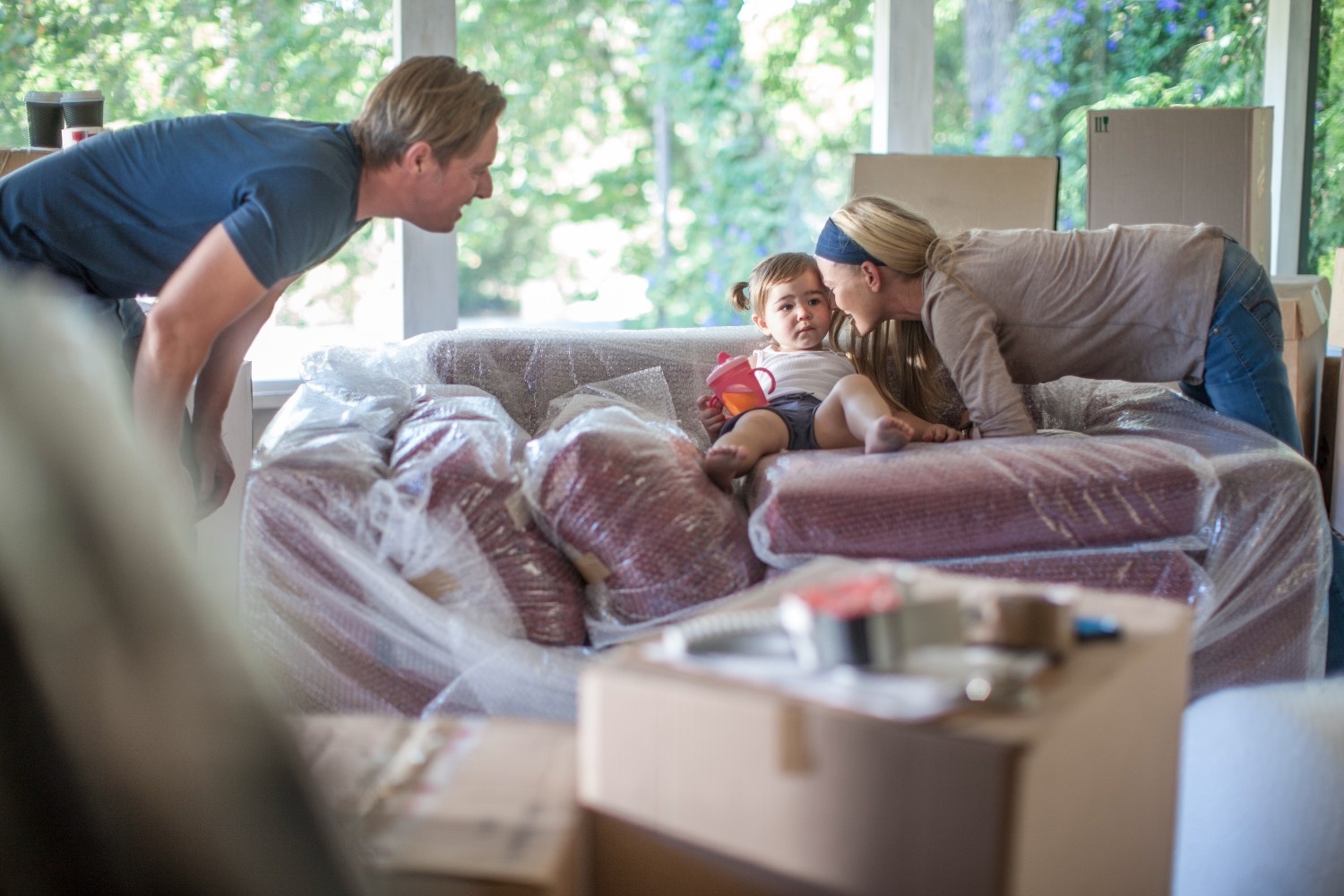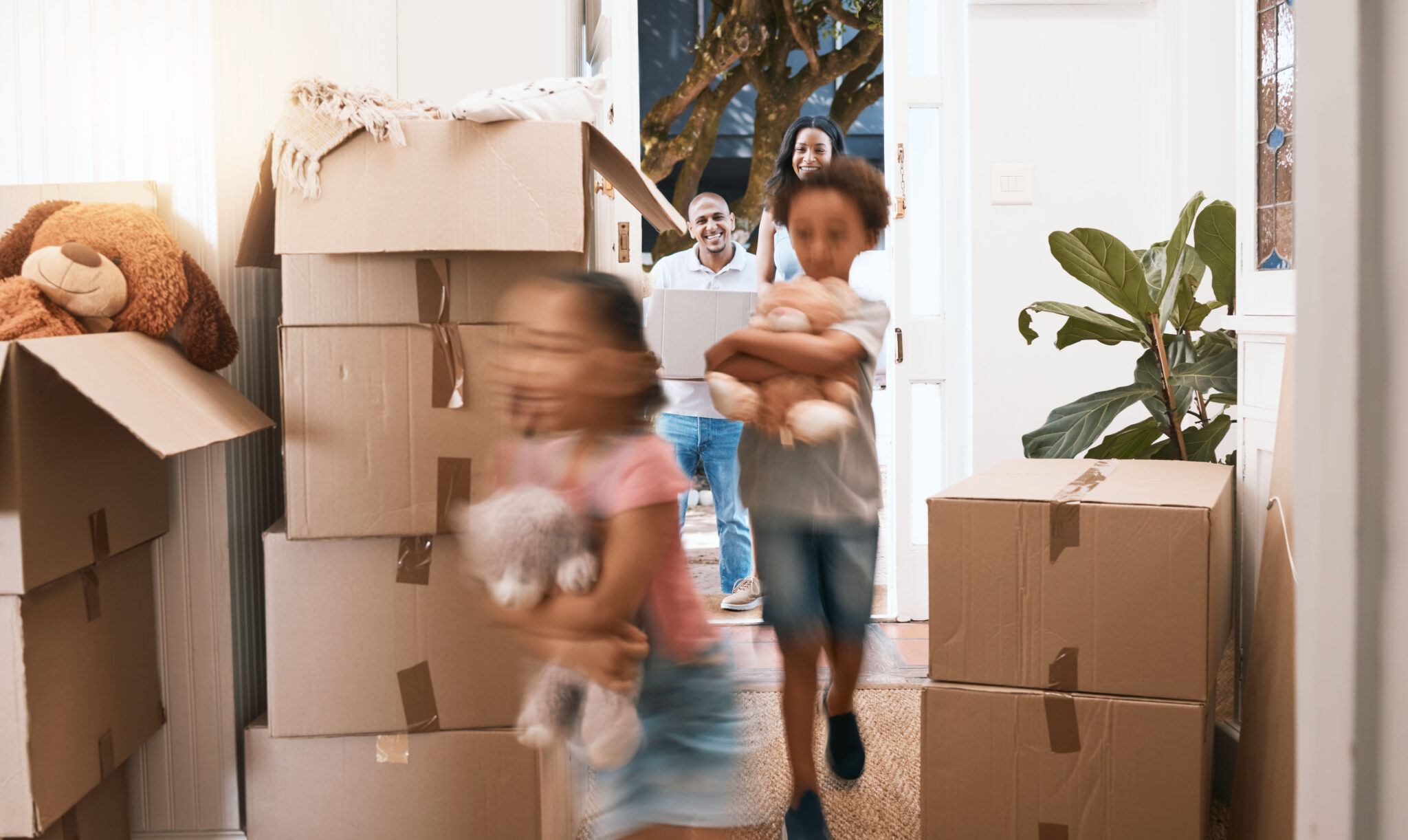When you’re in the middle of planning a move, it can feel like a whirlwind. And this is especially true when you have kids in the mix! The excitement of a new home is often mixed with worries about how your kids will adapt to their new environment. From finding the right neighborhood to making sure your little ones feel safe and happy, moving with children is a unique challenge. In this article, we’re sharing tips for communicating with kiddos, helping them deal with feelings in a healthy way, and making the relocation a positive adventure for the whole family.
Communicating About the Move
A successful move with kids starts with open and honest communication. It’s so important for kids to have the info they need to process the upcoming changes. Here are some ways to talk with your children about the move and to make sure everyone is on the same page:
- Discuss the Decision Early: Share the news of the move as soon as possible. This can help you process the changes together. Talk about the reasons behind the decision to help your children understand and accept the changes that will occur.
- Tailor the Explanation by Age: Use simple language for younger kids and provide more detailed explanations for older children. This helps a child grasp the situation in a way that’s appropriate for their age.
- Encourage Questions and Address Concerns: Create a safe space for your children to express their feelings. Like you, they probably have a mix of emotions, from fear to sadness to excitement. Answer their questions patiently to ease any anxieties they may have.
Moving With Children: Involving Kids in the Process

Moving is a big change for kids. But involving them in the moving process can help them feel more in control and less anxious. There are many ways to involve children in the process, but here are some ideas:
- House-Hunting Involvement: Take them along when looking at potential homes, or share photos if visits aren’t possible. Letting them see the new environment can spark excitement.
- Packing Their Belongings: As you prepare your home for the move, allow children to organize and pack their own items. This gives them ownership of their belongings and makes packing feel less like a chore.
- Choosing Decorations for Their New Room: Involve them in selecting decorations for their new space. This fosters excitement about the new home and helps them feel more connected to their new environment.
Maintaining a Routine
Routines can also create a sense of control and normalcy. Keeping a consistent routine throughout the moving process can help children feel more secure.
- Stick To Regular Schedules: Maintain regular meal times, bedtimes, and playtimes. Consistency provides a sense of normalcy amidst the chaos of moving.
- Avoid Major Life Changes Simultaneously: Too many changes at once can be overwhelming. When possible, postpone other significant changes (like potty training or school transitions) while you’re moving with children.
Preparing for the New Environment

To switch up the old saying, familiarity breeds confidence. And having a good mental picture of what to expect can make a move easier for everyone. Here are some ways to help kids feel more familiar and comfortable with their new surroundings:
- Become Familiar With the New Neighborhood: Show photos or take virtual tours of local parks, schools, and attractions. This can build excitement about the new area.
- Arrange Meetups: Introduce kids to potential new friends or neighbors ahead of time. Building connections early can help them feel more at home.
- Share Positives: Highlight the fun aspects of the new location (such as new activities, parks, or events) to create a positive outlook.
Making Moving Day Easier
The months or weeks leading up to the move can be challenging, but moving day can be downright hectic! Here are a few strategies to make the big day easier when you’re moving with children:
- Hiring Professional Movers: A moving partner (like Scobey) can handle the heavy lifting and logistics while you focus on helping the kids adjust.
- Pack Essentials Separately: It’s a great idea to pack an “essentials bag” for easy access during the move. When you’re moving with children, include their favorite toys, snacks, and comfort items in a separate box or bag. This way, kids have access to familiar items during the move.
- Keeping Kids Occupied: Set up a safe play area or arrange childcare for moving day to keep them engaged and entertained.

Settling Into the New Home
Once you get to your new house, it’s important to start making it feel like home. Here are some ways to help kids feel comfortable in their new environment:
- Unpack Their Room First: Setting up their space first can help provide a sense of stability and ownership in the new home.
- Explore Together: Take family walks to discover the new area. Exploring together can turn the new environment into an adventure.
- Establish New Routines Quickly: Create a sense of normalcy by establishing new routines soon after moving. This can help children adjust faster to their new surroundings.
Moving With Children: Supporting Emotional Well-Being
Moving can bring up a lot of emotions for adults and children. It’s important to acknowledge feelings, talk through fears and worries, and help kids adjust to their new normal.
- Acknowledge Their Feelings: Validate any sadness or nervousness they might feel about the change. Let them know it’s okay to have these emotions.
- Share Your Own Feelings: Demonstrate empathy by expressing your own adjustments. This shows them that it’s normal to feel a range of emotions.
- Encourage Positive Connections: Help kids stay in touch with old friends while making new ones to maintain their social well-being.
A Great Move for the Whole Family

Moving with children presents unique challenges, but with careful planning, open communication, and empathy, the transition can be a positive experience for the entire family. By involving your children in the process, maintaining routines, and supporting their emotional well-being, you can turn a potentially stressful move into an exciting new beginning.
FAQ About Moving With Children
- How can I help my child adjust to a new school?
Get involved by visiting the new school together before the move, meeting teachers, and encouraging your child to participate in extracurricular activities to make new friends. - What should I do if my child is resistant to the move?
Listen to their concerns, validate their feelings, and involve them in the moving process to give them a sense of control and ownership over the change. - Are there any signs of stress I should watch for after the move?
Look for changes in behavior such as increased irritability, withdrawal, difficulty sleeping, or changes in eating habits, and address them by providing extra support and reassurance.






